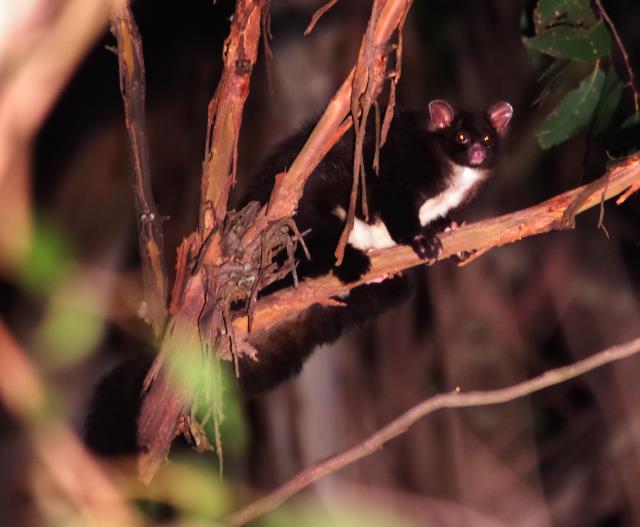By Callum Ludwig
The beloved native Greater Glider has been moved from vulnerable to endangered status according to the Environment Protection and Biodiversity Conservation Act 1999, effective from Tuesday 5 July.
Found throughout the Yarra Ranges, particularly in the National Park, the Greater Glider currently has no dedicated Recovery Plan or relevant threat Abatement Plan according to the Australian Government’s Department for Climate Change, Energy, the Environment and Water.
President of the Warburton Environment organisation Nic Fox said it’s only been five years since the Greater Glider was first considered threatened.
“This animal needs to have an action plan and it needs to be protected because this iconic species has been pushed to the brink of extinction,” she said.
“I think the main impacts are logging, bushfires and climate change. We know the devastating 2019 bushfires destroyed nearly two-thirds of the Greater Glider habitat near Gippsland.”
The cute marsupials are cat-sized, with small beady eyes and big ears. They can glide up to 100 metres using a membrane that spreads between their front and back legs. The nocturnal; creatures are unique to Australia, living all the way down the eastern side of the country from Northern Queensland to Central victoria.
Ms Fox said the unburned areas of Victoria are critical refuges not only for the Greater Glider, but many other threatened species.
“We need to protect them, we need to continually be vigilant about this, it’s urgent that we are going to be losing the biodiversity, we’re going to be losing these animals,” she said.
“It’s also for ourselves, biodiversity is a central part of the ecosystem. Without one element, another element goes, we know that that has an impact throughout the whole ecosystem.”
Bushfires ripping through their habitat have been a large factor in falling glider numbers, but they are also adversely affected by changes in temperature. Heatwaves and rising night-time temperatures have a significant impact on the well-being of the species.
Ms Fox called for a transition away from the logging of native forests.
“There are strong links between logging and bushfires, we saw that in 2019 in Marysville, it was heavily logged around there and it burned hard. We know that we’re in a time of climate change, which affects us and these creatures. Whatever we can do to tackle any of those three elements we need to do it urgently, and I see logging the habitat of the greater gliders is the first thing that we could do easily,” she said.
“They need their habitat, as we all do. It’s an incredibly cute and beautiful creature. It doesn’t make it any more valuable than for example, the Mt Donna Buang Wingless Stonefly, but when you lose it you don’t actually know what you’re losing. We don’t know exactly what role it plays in the ecosystem.”
In 2019, VicForests implemented harvesting and regeneration reforms to adopt adaptive approaches to selecting and applying harvesting and regeneration systems that retain and protect a broad range of forest values including the Greater Glider.
A VicForests spokesperson said their activities are informed by the latest scientific research and guided by best practices.
“Through surveys and the development of new harvesting approaches, we do everything we can for the conservation of the Greater Glider,” they said.
“We prioritise the retention of hollow-bearing trees to preserve potential habitat for the Greater Glider and other wildlife.”
In accordance with the Greater Glider Action Statement – developed by the Victorian Government on the basis of expert scientific advice, VicForests retains at least 40 per cent of trees across each timber harvesting coupe, prioritising live, hollow bearing trees, wherever a density of Greater Gliders is equal to or greater than five individuals per spotlight kilometre.
Since the 2019 bushfires, the density has dropped to three per spotlight kilometre.
VicForests has had a dedicated Greater Glider Conservation Strategy in place since 2019 and had additional protections in place since the 2019/20 bushfires.
As an interim protection measure, the Department of Environment, Land, Water and Planning (DELWP
identified 50 forest compartments in the East Gippsland Regional Forest Agreement where timber harvesting must be excluded from 85% of the high-quality habitat.
VicForests’ post-harvesting surveys demonstrate the continued persistence of Greater Gliders in areas that have been recently harvested under their current practices.
VicForests said it will continue to adapt its management in response to new information and will consider the updated Greater Glider conservation advice, and any future National Recovery Plan, in determining changes to protections, priority management actions and changes to its management systems.







